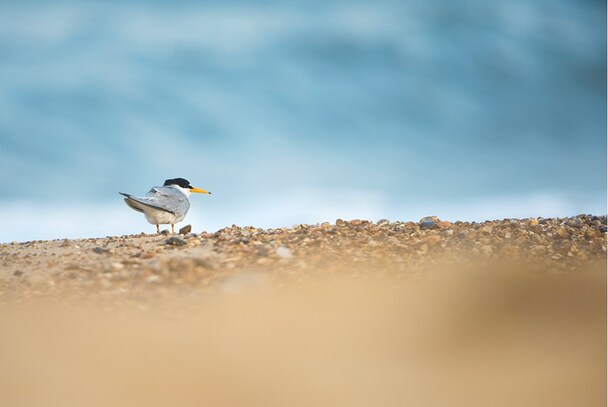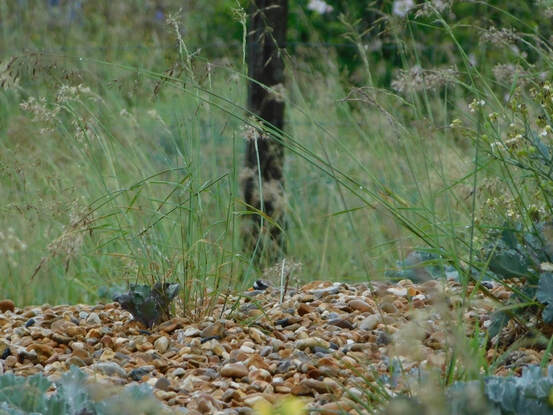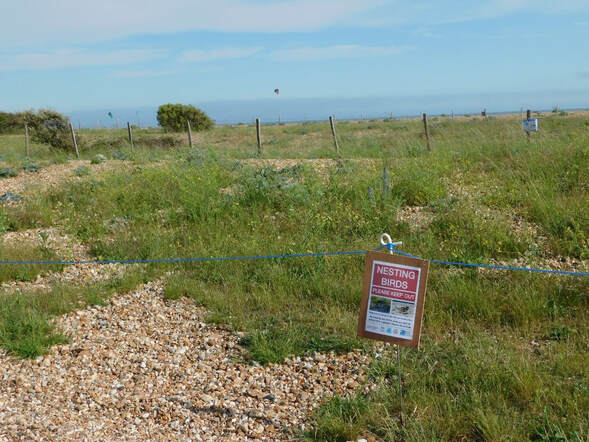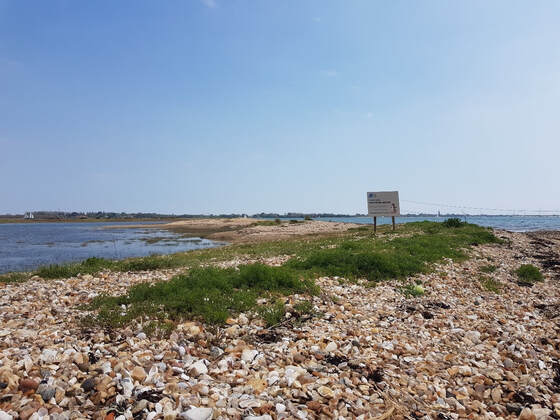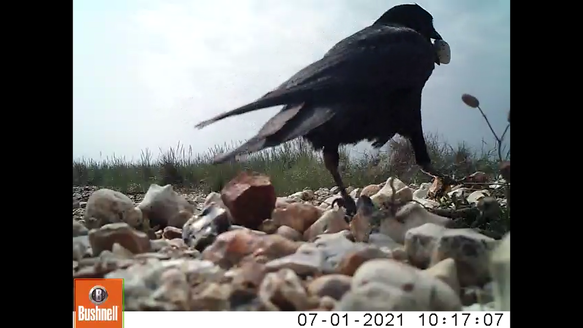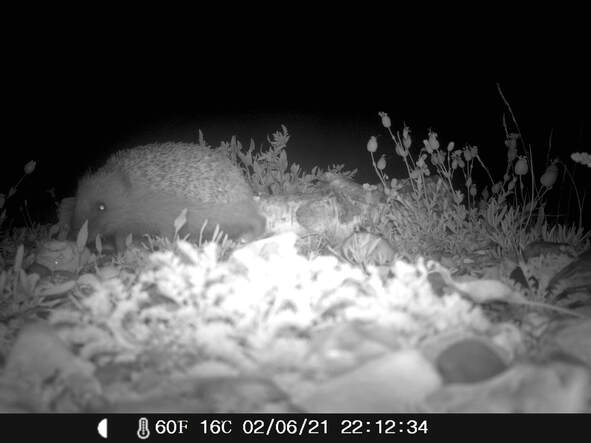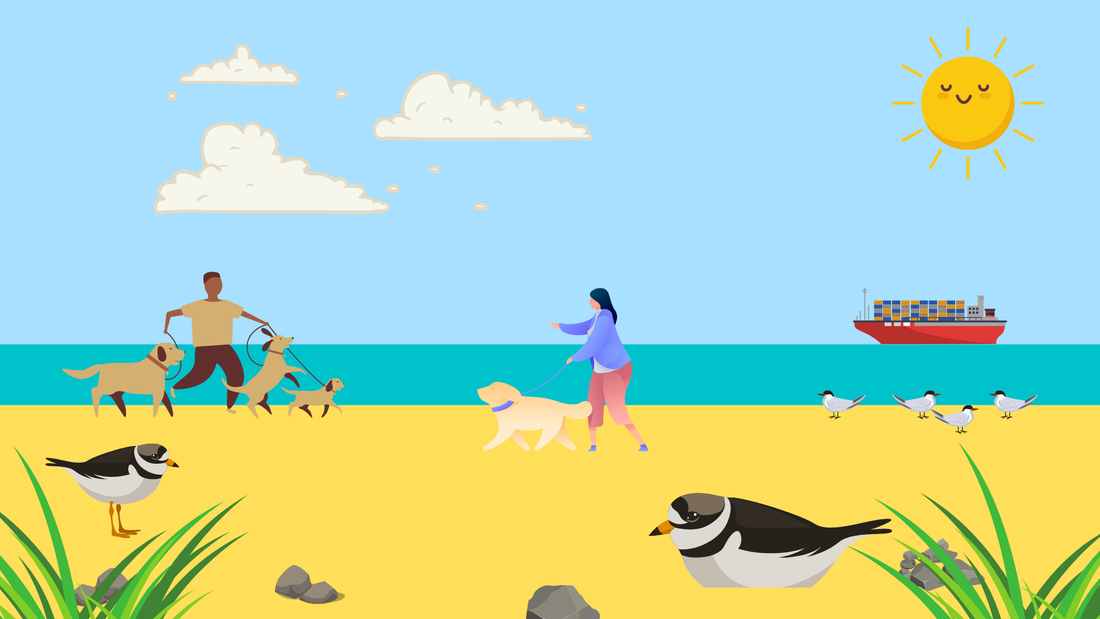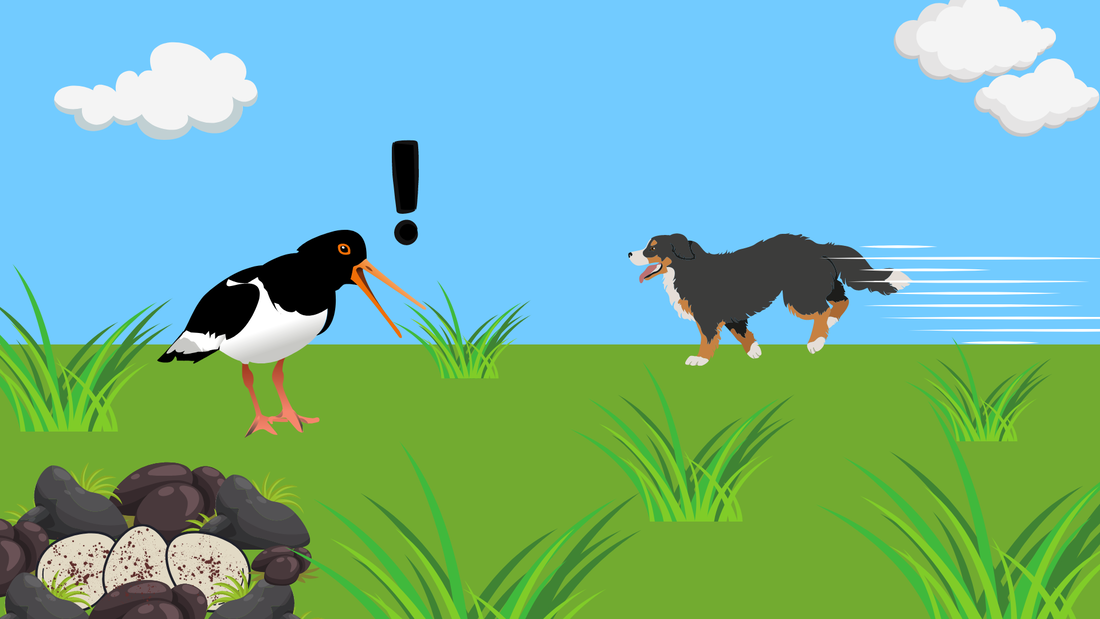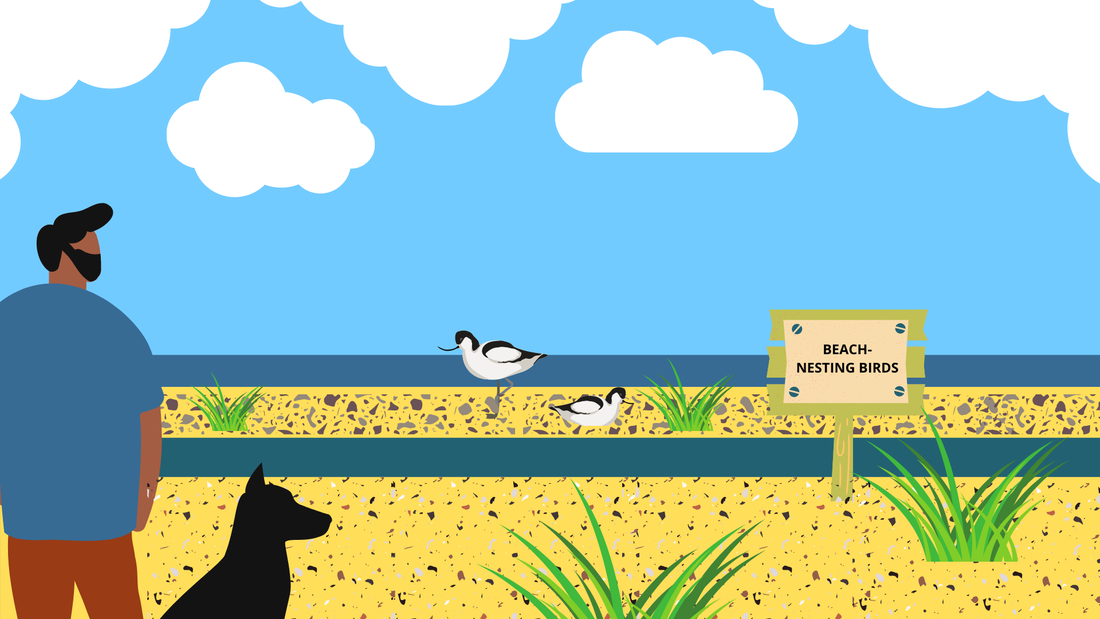|
Blog by Sophie Yeomanson, RSPB Community Shorebird Officer In the Solent, beach nesting birds are faced with many threats, from increasing visitor pressure, to loss of suitable habitat for nesting. Every year, colonies of Little, Common and Sandwich Tern migrate to the Solent from Africa to nest on our shingle beaches, alongside Ringed Plover, Oystercatcher, Black-headed and Mediterranean gulls. My name is Sophie and here is some insight into the work I have been doing for the past three months as a Shorebird Officer for LIFE on the Edge in the Solent. Initial Monitoring Monitoring the threats to breeding birds on a site is important, as this will inform management practises to mitigate against them. Much of the work we have been doing in the Solent over the past few months has involved watching nests, recording disturbances, and monitoring how the nesting birds have been reacting to these disturbance events. Discovering how the beach is used by people and other wildlife is an important first step to finding ways to protect the nesting birds. Different species react differently to threats, for example, we have seen ringed plovers performing a broken wing act when they think their nest may be under threat from an inquisitive dog, intending to lead the perceived predator away from the young before flying off. Other species will mob the threat, an example of this being oystercatchers noisily attacking drones flying overhead, whilst leaving their nests exposed to the elements. Practical measures can be taken to prevent this from happening, such as installing temporary fencing to cordon off areas on the beach and installing signs facing out towards the sea so that people approaching from the water know where to avoid when landing. So far in the Solent, temporary fencing has been installed across three different sites for the first time, giving refuge to multiple families of little tern, ringed plover, and oystercatcher. Trail cameras are also extremely useful tools for helping us to monitor nests. The cameras collect snapshot footage of a fixed location over time, using motion detectors and timers. These have allowed us to monitor the nesting sites without being present 24 hours a day, so we can see what happens when we aren’t looking and plan protection measures for the future. Across the Solent beach nesting bird sites, we have been locating ringed plover and oystercatcher nests and setting up trail cameras to monitor them. Footage from this year has revealed that egg predation (by carrion crows and hedgehogs) has been a cause of nesting failure at one site, where nesting success had not previously been monitored in depth. Because of these findings, decisions can be made about how our team can safeguard nests for the next breeding season to hopefully allow the nests to progress past the incubation stage. Our Excellent Volunteers Engaging with members of the public is another vital part of our work in the Solent to make space for birds to nest. Whilst practical measures to protect nests, such as temporary fenced off areas, work to protect the birds within them, birds can’t read the signs and don’t always choose to nest in the areas we create for them. That’s where community engagement comes in! Our wonderful new team of beach nesting bird volunteers have been doing an excellent job talking to beach visitors around the Solent about the species we share our shores with, and promoting the small changes they can do that will make a big difference to the success nesting birds. Having a daily volunteer presence on the sites has proved to be really important, and visitors have thoroughly enjoyed learning about the birds, often astonished by the images presented to them of eggs laid in shingle scrapes or of tiny camouflaged chicks on the beach. For many of the visitors, conversations with the team are the first they’ve heard of a ringed plover or little tern, let alone seen one on the beach. Raising awareness of these “invisible” species through community engagement will be pivotal in helping these birds to thrive in the future. 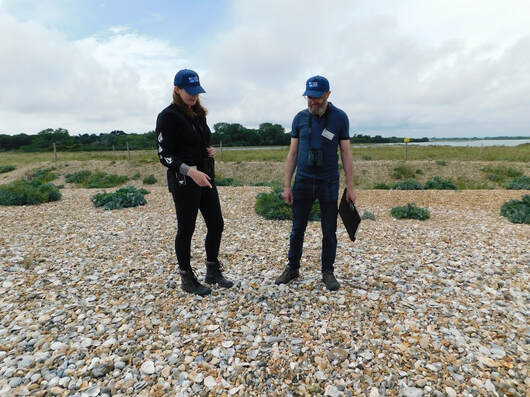 Our Beach Nesting Bird volunteers at RSPB Pagham Harbour discussing the challenges shorebirds face and why it is important for visitors to give them space. Here, they have been using a model Little Tern and photos of nests to help show how vulnerable to disturbance beach nesting birds can be. Photo Credit: Sophie Yeomanson How can you help? We are looking to expand this team across the wider Solent area in time for the next breeding season to help safeguard other nesting sites and provide a joined-up network of safe spaces for seabirds and beach nesting waders. Find out how to get involved here: https://www.rspb.org.uk/get-involved/volunteering-fundraising/volunteer/ Or you can enquire through the LIFE on the Edge website: https://www.projectlote.life/
0 Comments
Guest Blog by Will Bevan, RSPB Beach Nesting Bird Field Officer The UK is a nation of dog lovers, with an estimated 12 million pups in UK homes and a large increase in dog ownership since the beginning of the COVID-19 pandemic. We are also a nation of wildlife lovers, with the RSPB alone having over 1.1 million members, and many choosing to visit nature reserves and local wildlife sites in their free time. The two are by no means mutually exclusive, and dog ownership is a fantastic way to stay active, get outside, and appreciate the natural world. The RSPB encourages responsible dog walking on its nature reserves, and in the wider countryside, but what does this mean for dog owners, and why is it necessary around our wildlife? What is responsible dog walking? Responsible dog walking means:
Why is this necessary? Dog owners are often passionate advocates for the environment and possess a wealth of knowledge about the wildlife on their local patches where they regularly go for walks. Sadly though, there are times when dogs can cause major disturbances by chasing or attacking wildlife. Earlier this year, a ten-month old seal pup well known by locals and nicknamed ‘Freddie’, was basking along the Thames in west London when it was attacked by a dog off its lead. It was rescued by a South Essex wildlife hospital, but tragically its injuries were so severe it had to be humanely put down. The owner was heartbroken and regretted that the dog had not been on a lead but had not thought it was necessary at the time. If you are unsure as to how your dog will react around wildlife, especially if they are young or untrained, it is always better to be sure and put it on a lead. This kind of interaction is an extreme example, but this is not the only way in which dogs can negatively impact on wildlife. A far greater problem is that of disturbance. What is disturbance? For much of our wildlife, humans and dogs are seen as predators, and so they will behave as such when we approach. This is a big problem for ground-nesting birds, who do not feel the safety of being up in a tree or bush. Birds that nest on the ground include our beach-nesting birds, such as little terns and ringed plovers, as well as curlews, lapwings, and oystercatchers. When predators, dogs, or people approach, these birds will leave their nests, trying to distance themselves from their eggs or chicks. They might try to lead the threat in another direction, or mob the intruder along with other nesting birds until it leaves the area. These disturbances mean that eggs and chicks are left unattended, making them vulnerable to predation, to thermal stress from being too cold or too hot, or to being crushed as they are very hard to spot. Constant disturbance can also use up the energy reserves of the adults, who are working hard to incubate their eggs and feed themselves - as well as their chicks after they hatch. Eventually if there is too much disturbance the birds abandon their nests, and although they may try again, if this is too late in the breeding season a second attempt may often be unsuccessful. Disturbance can also be an issue outside of the breeding season, as birds roosting along the shoreline in the winter are often resting and reserving their precious energy reserves. For beach-nesting birds who must share their space with regular beach users as well as the huge influx of people and their dogs on weekends and holidays, this can often be too much. Along with other threats such as predation alongside inundation from high tides and severe storms, increasing disturbance at nesting sites is pushing these species to their limits, with many shorebirds facing declines around the world. Dog owners can make a huge difference to the fate of these birds, as recent research by Professor Miguel Angel Gómez-Serrano from the University of Valencia on Kentish plovers suggests that lone, wandering dogs off their leads disturb birds from their nests almost 100% of the time, more than if they were accompanied by their owner and much more than by someone without a dog. This research also showed that sticking to paths and complying with fencing and buffer zones around colonies reduced the amount of disturbance for beach nesting birds. There is plenty of room for both dog walkers and wildlife, and simple measures such as keeping dogs under control or on leads in certain areas can have a real impact on the fate of many of our bird species. This is only done in certain places or times of the year when it is necessary, and there will usually be signs or wardens on hand to let dog owners know. Space for Shorebirds is a project run by the Northumberland County Council, and one of its main objectives is to reduce the impact of human recreation on bird populations. Part of this involves fostering positive relationships with dog walkers and asks owners to get their dogs to take the Dog Ranger pledge. They share owners’ dogs on social media with the hashtag #dogranger and get them to spread the message about shorebird conservation. Another example is Bird Aware Essex Coast, which aims to raise awareness about coastal birds whilst preventing human disturbance. With fantastic schemes such as this, we can all work together to ensure a bright future for shorebirds where we can peacefully co-exist alongside each other. Look out at the end of July when the RSPB will be hosting ‘Smooch a Pooch’ along the East Norfolk coastline to raise awareness about our beach-nesting birds as well as celebrating our furry friends, with a chance to chat to some of our Field Officers and some tasty treats for the dogs! For more information here is the Facebook link for the event at Winterton Village Hall, Sat 17th July, 8am-12pm. Their contact email is [email protected]. |
Archives
April 2024
Categories
All
Photo credits: Oystercatcher by Katie Nethercoat (rspb-images.com)
LOTE Logo credits: Saskia Wischnewski |

